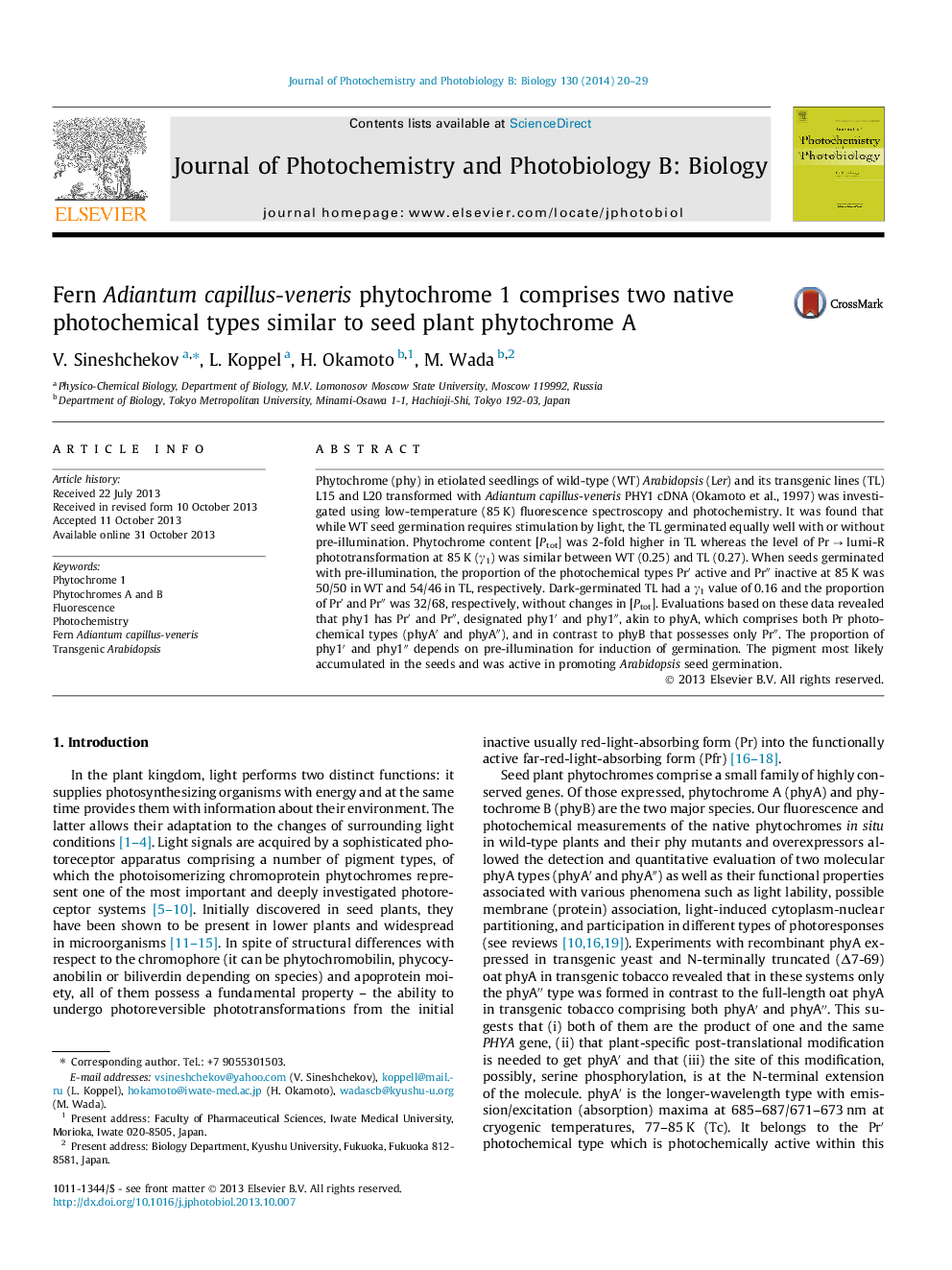| Article ID | Journal | Published Year | Pages | File Type |
|---|---|---|---|---|
| 30417 | Journal of Photochemistry and Photobiology B: Biology | 2014 | 10 Pages |
•Fern phytochrome 1 in Arabidopsis was investigated by fluorescence spectroscopy.•Two pools of phytochrome 1 similar to those of phytochrome A were detected.•Preillumination of seeds affected equilibrium between these pools in seedlings.•Transgenic Arabidopsis germinated light-independently in contrast to the wild type.
Phytochrome (phy) in etiolated seedlings of wild-type (WT) Arabidopsis (Ler) and its transgenic lines (TL) L15 and L20 transformed with Adiantum capillus-veneris PHY1 cDNA (Okamoto et al., 1997) was investigated using low-temperature (85 K) fluorescence spectroscopy and photochemistry. It was found that while WT seed germination requires stimulation by light, the TL germinated equally well with or without pre-illumination. Phytochrome content [Ptot] was 2-fold higher in TL whereas the level of Pr → lumi-R phototransformation at 85 K (γ1) was similar between WT (0.25) and TL (0.27). When seeds germinated with pre-illumination, the proportion of the photochemical types Pr′ active and Pr″ inactive at 85 K was 50/50 in WT and 54/46 in TL, respectively. Dark-germinated TL had a γ1 value of 0.16 and the proportion of Pr′ and Pr″ was 32/68, respectively, without changes in [Ptot]. Evaluations based on these data revealed that phy1 has Pr′ and Pr″, designated phy1′ and phy1″, akin to phyA, which comprises both Pr photochemical types (phyA′ and phyA″), and in contrast to phyB that possesses only Pr″. The proportion of phy1′ and phy1″ depends on pre-illumination for induction of germination. The pigment most likely accumulated in the seeds and was active in promoting Arabidopsis seed germination.
